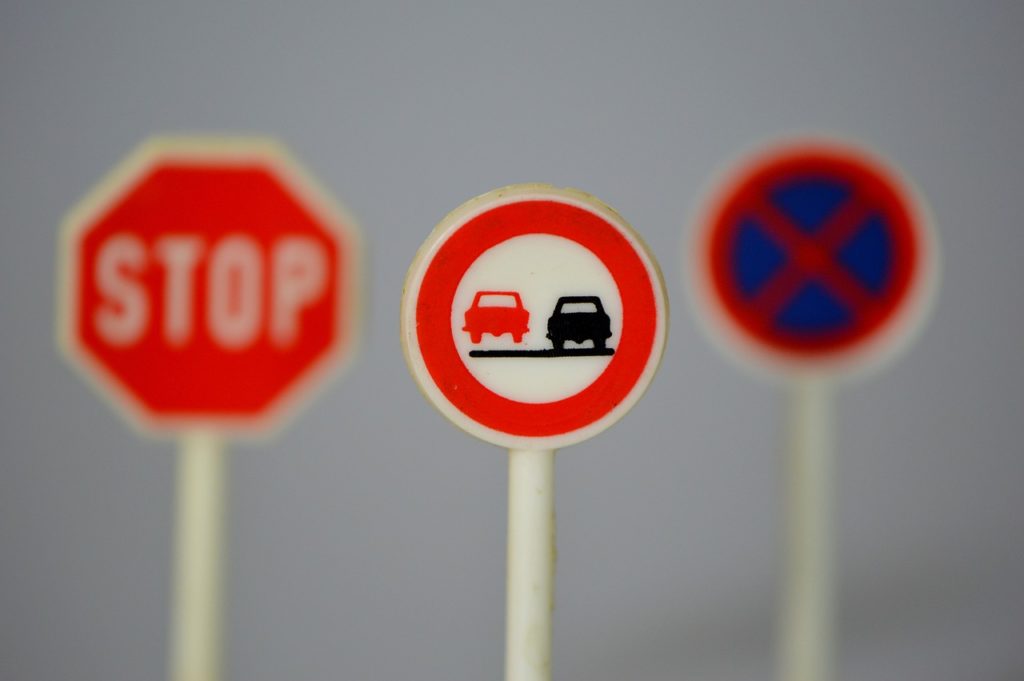How To Learn To Spot And Understand Road Signs
The hardest part about motoring isn’t the actual driving, it’s the things that you have to do to drive safely. Spotting and understanding road signs is the most difficult thing when you’re moving at 30-50mph; at least for the first year or so. Before you even get to the test, you should be able to recognise about 80% of the road signs and be able to respond to them in the theory test. It will be too late by the time you hit the practical test if you don’t get it right in theory. So we are going to show you a thing or two about road signs to help you learn them.
Colour Coding
Road signs are not there to make things complicated. You only need to pay attention to the ones that concern you. If you look at the Jarvis – WelcomeDriver, 2021 you will learn there are six different colour schemes for signs. Green signs are for main routes, such as when you’re on the motorway or about to head onto a dual carriageway. Blue is for direction signage and instructions. Red is used for warnings. Brown is for tourist directions, services, etc, and yellow is for road works and potential on-road hazards, like diversions. White is for information and local directions.
Go Walking
You may notice that now is the perfect time to go walking. In lockdown and areas where there are strict measures in place for public transport and driving, you can walk freely around town. You should use this opportunity to go sign hunting. Notice all the signs around you and try to understand what they mean. Spot a pattern and how they are being used. It may be that certain towns or cities have a different method of showing road users what to look out for. Remember that every city, town and parish council has their own local government that deals with these signs being put up, etc. So you won’t always get the consistency of frequency and positioning.
Read
You should buy a road sign book that has all the relevant signs that are still in use. It will give you all the knowledge you need to know. All you have to do is study it and make it a part of your normal life. Eventually the signs will seep into your memory, becoming just like every other piece of information you have in your brain. If you take the time to read the book about 30-minutes or one hour a day all the way up until your test, you will be right as rain. Eventually, the signs will just become what they were designed to be: symbols that connect to images and short pieces of information that are helpful to the driver.
Don’t worry too much about road signs. Many of them are self-explanatory, and some of the rarer ones that seem difficult to understand or remember might not come up in the test.
-
Categories
- Abarth
- Alfa Romeo
- Aston Martin
- Audi
- Bentley
- BMW
- Caterham
- Chevrolet
- Chrysler
- Citroen
- Dacia
- DS
- Ferrari
- Fiat
- Ford
- Great Wall
- Honda
- Hyundai
- Infiniti
- Isuzu
- Jaguar
- Jeep
- Kia
- Land Rover
- Lexus
- Lotus
- Maserati
- Mazda
- McLaren
- Mercedes
- MG
- Mini
- Miscellaneous Articles
- Mitsubishi
- Morgan
- Motability
- Nissan
- Peugeot
- Porsche
- Renault
- Rolls-Royce
- Saab
- Seat
- Skoda
- Subaru
- Suzuki
- Tesla
- Toyota
- Vauxhall
- Volvo
- VW
- Zenos
-
Articles
- June 2025
- April 2025
- February 2025
- January 2025
- September 2024
- July 2024
- March 2024
- January 2024
- December 2023
- September 2023
- August 2023
- May 2023
- January 2023
- October 2022
- July 2022
- May 2022
- April 2022
- February 2022
- December 2021
- November 2021
- October 2021
- September 2021
- August 2021
- July 2021
- June 2021
- May 2021
- April 2021
- March 2021
- February 2021
- January 2021
- December 2020
- November 2020
- October 2020
- September 2020
- August 2020
- July 2020
- June 2020
- May 2020
- April 2020
- March 2020
- February 2020
- October 2019
- September 2019
- August 2019
- July 2019
- June 2019
- April 2019
- March 2019
- February 2019
- January 2019
- October 2018
- August 2018
- July 2018
- June 2018
- April 2018
- March 2018
- December 2017
- August 2017
- July 2017
- June 2017
- May 2017
- March 2017
- February 2017
- January 2017
- December 2016
- November 2016
- October 2016
- September 2016
- August 2016
- July 2016
- May 2016
- April 2016
- March 2016
- February 2016
- January 2016
- December 2015
- November 2015
- October 2015
- September 2015
- August 2015
- July 2015
- June 2015
- May 2015
- April 2015
- March 2015
- February 2015
- January 2015
- December 2014
- November 2014
- October 2014
- September 2014
- August 2014
- July 2014
- June 2014
- May 2014
- April 2014
- February 2014
- January 2014
- December 2013
- November 2013
- October 2013
- September 2013
- August 2013
- July 2013
- June 2013
- May 2013
- April 2013
- March 2013
- February 2013
- January 2013
- December 2012
- November 2012
- October 2012
- September 2012
- August 2012
- July 2012
- June 2012
- May 2012
- April 2012
- March 2012
- February 2012
- January 2012
- December 2011
- November 2011
- October 2011
- September 2011
- August 2011
-
Meta




